The Cajun Spey Waltz
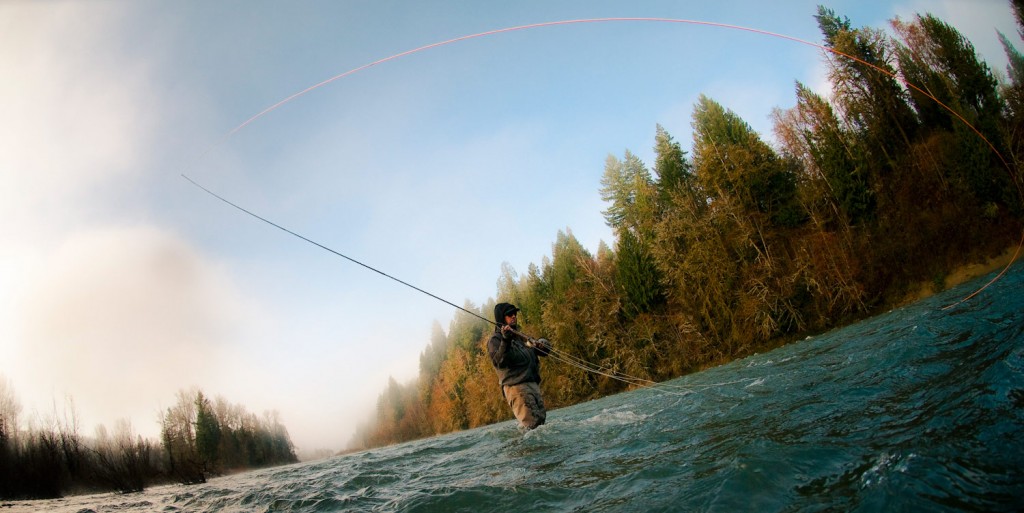
Snow is blowing in around the corners of my glasses and forty degree water is slowly making its way into my waders.
I haven’t seen the sun for several days and the river is full of chrome bright steelhead. It doesn’t feel much like Louisiana. Never the less the tune that keeps dancing in my head and eventually to my lips is an old Cajun waltz, “The Big Mamu”.
I have a deep and conflicted love for Louisiana. I almost moved there once. Like I said, I’m conflicted, but of the many things I love about the place, maybe I love the music best. The Blues, the Hot Jazz, the Zydeco and the beautiful and haunting traditional Cajun music. The sound of the accordion, the fiddle and the washboard pull at my heart strings. I don’t know why but I loved it the first time I heard it. But what does it have to do with steelheading? Apparently, everything.
I love Spey casting but I don’t get to do as much of it as I’d like and consequently it takes me a while to get into the rhythm. There are three basic parts to a Spey cast. The anchor placement, the sweep and the cast. Inevitably, when my casting goes to hell it’s the timing of my sweep that’s the problem. I’ve spent so much time developing speed and strength for my saltwater casting that it takes a while for me to remember that Spey casting is the exact opposite. Slow and easy.
I’m not a Spey Guru so I’ll keep it simple. The sweep is the part of the cast where you form a D loop and load the rod. Both very important. There is a direct relationship between the height of the rod tip and the speed of the sweep. As the rod tip is lowered the sweep must be faster to aerialize the head. A higher rod tip and slower sweep is easier to control, so that’s what I shoot for but I inevitably start to rush it and my casting gets sloppy. A friend told me to try and count to three during my sweep. I tried but I still rushed it and that got me thinking about how to count to three at a consistent speed. I struggled with it and then it dawned on me, the Cajun waltz.
The physicality of the music is perfect. It’s dance music, your body instinctively responds. The gentle, one-two-three, of the
Read More »2 Alternatives for Attaching Your Split-Shot
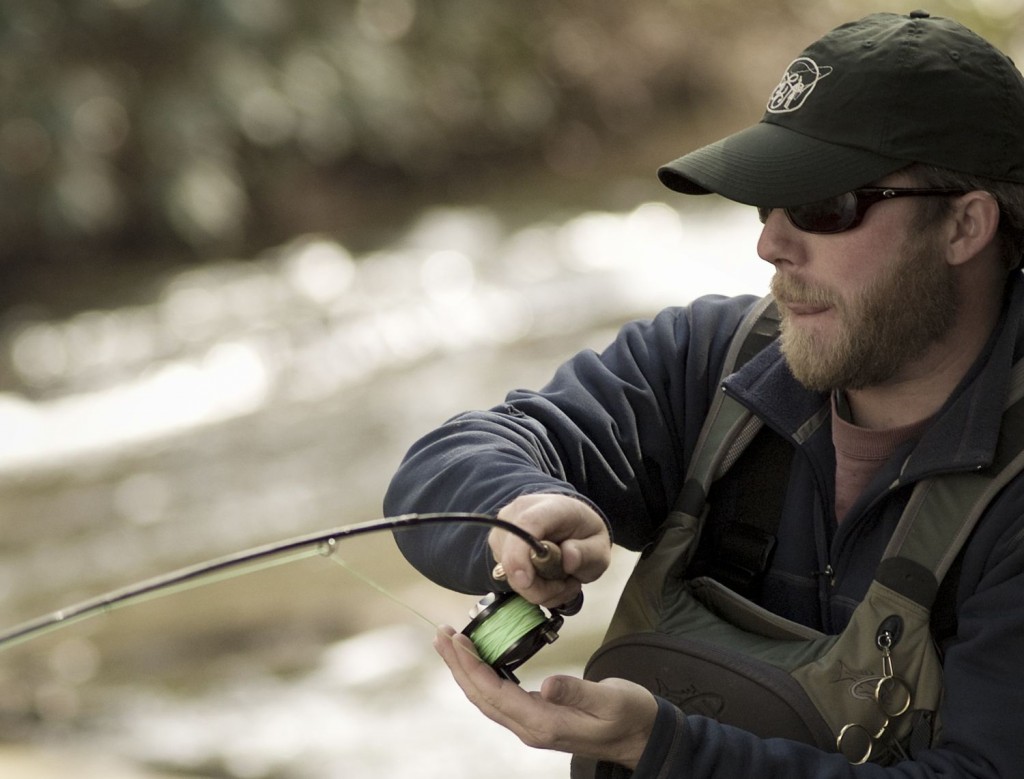
YOU’VE BEEN FISHING HARD ALL DAY LONG SEARCHING FOR THAT PERFECT HONEY HOLE. YOU KNOW THE ONE I’M TALKING ABOUT, IT’S THE ONE THAT HOLDS THAT TROPHY TROUT THAT KEEPS HAUNTING YOU IN YOUR DREAMS.
It’s getting late, your tired, and you know you should be heading back, but there’s a bend just up ahead, and your curiosity keeps pushes you forward with those powerful words, “This could be it, just see what’s on the other side”. Sure enough, as you round the corner you lay your eyes on a picture perfect run, offering everything a trophy trout could desire. You get into position, make the cast, mend your line, and begin following your strike indicator with your rod tip, when out of now where, it shoots under the surface like it was just attached to a iron dumb bell. You set the hook and feel the heavy weight of the fish thrashing its big head, and you’re immediately on cloud 9. The adrenaline rush doesn’t last long though. It’s quickly replaced by painful heart ache when you feel your tippet snap, and watch your rod go straight. The excitement is all over…, you won’t land that trophy fish or even be graced with a quick glimpse of it for that matter. The only memory you’ll have to remember that trophy trout by is the few aggressive head shakes. You bring your fly-less rig to hand and find the tippet broke at the split-shot.
Has this ever happened to you before?
If you attach your split shot too tight on your tippet it can weaken its strength significantly. Most anglers try to avoid this by tying a triple surgeon’s or blood knot above their tandem nymph rig, and attach the split-shot above that. The knot keeps the split-shot from sliding down to the flies during fly casting, and it only has to be snugly secured, which limits the chances of it damaging the tippet. It’s not 100% full proof, but it’s the most popular method used by experienced nymph fisherman. To limit the break offs during fierce fights, anglers should get in the habit of regularly checking their nymph rig for
Focus On Steelhead Technique
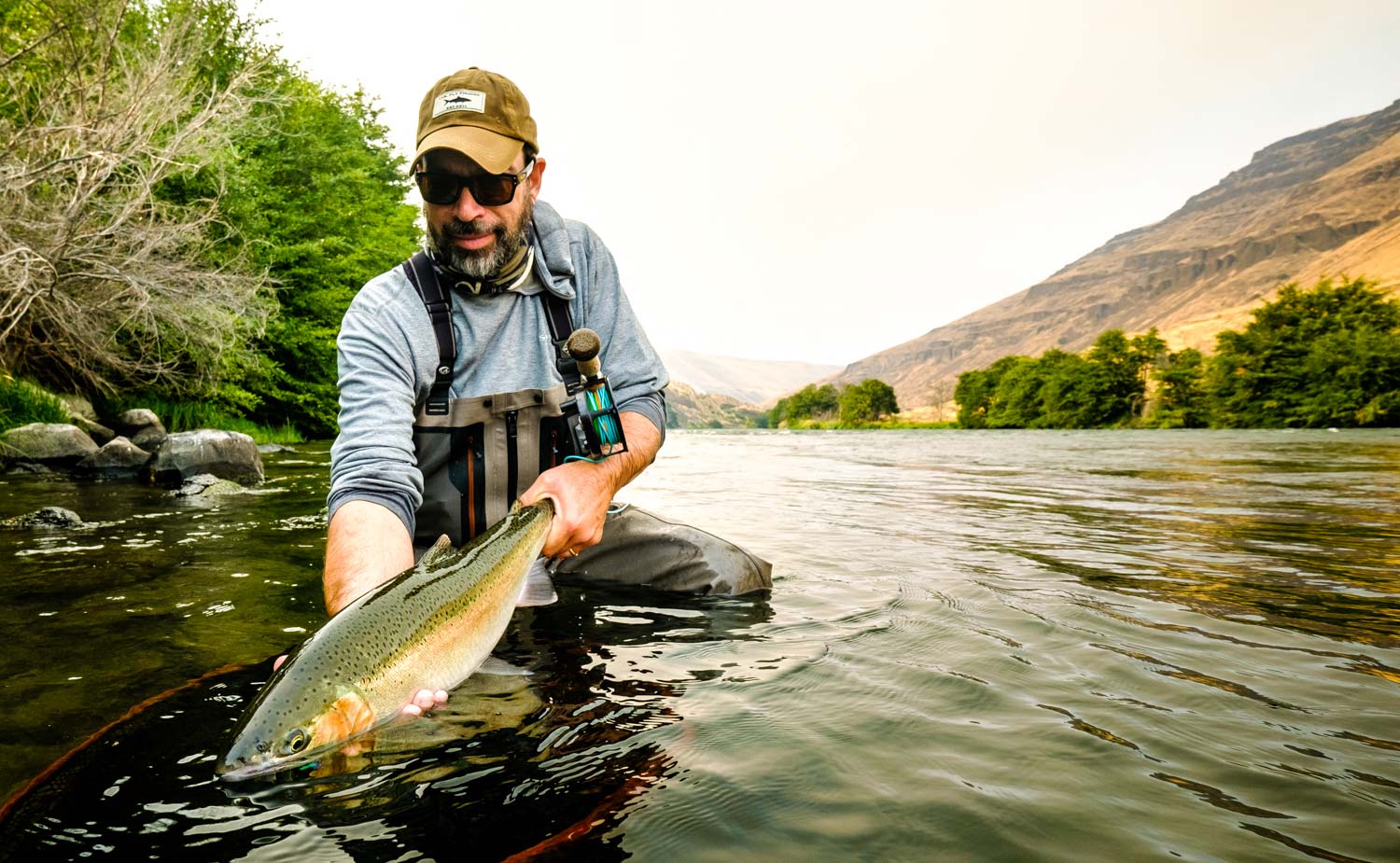
By Louis Cahill
Here are 5 jam-packed articles to help you catch more steelhead.
If you want to catch steelhead on the swing, you have to have solid technique and stick to your guns. Often, you don’t get a lot of feedback from the fish so you have to know what will work and stick to it. That can be tough, especially if you are new to the game, but even experienced anglers can falter when fishing is slow.
Below are links to five articles which focus on steelhead techniques that produce fish. Get yourself a cup of coffee and dig in for a nuts-and-bolts steelhead download. These tips should help make your next steelhead trip a success.
Read More »“I’m Down To Seven Patterns Fuckit”
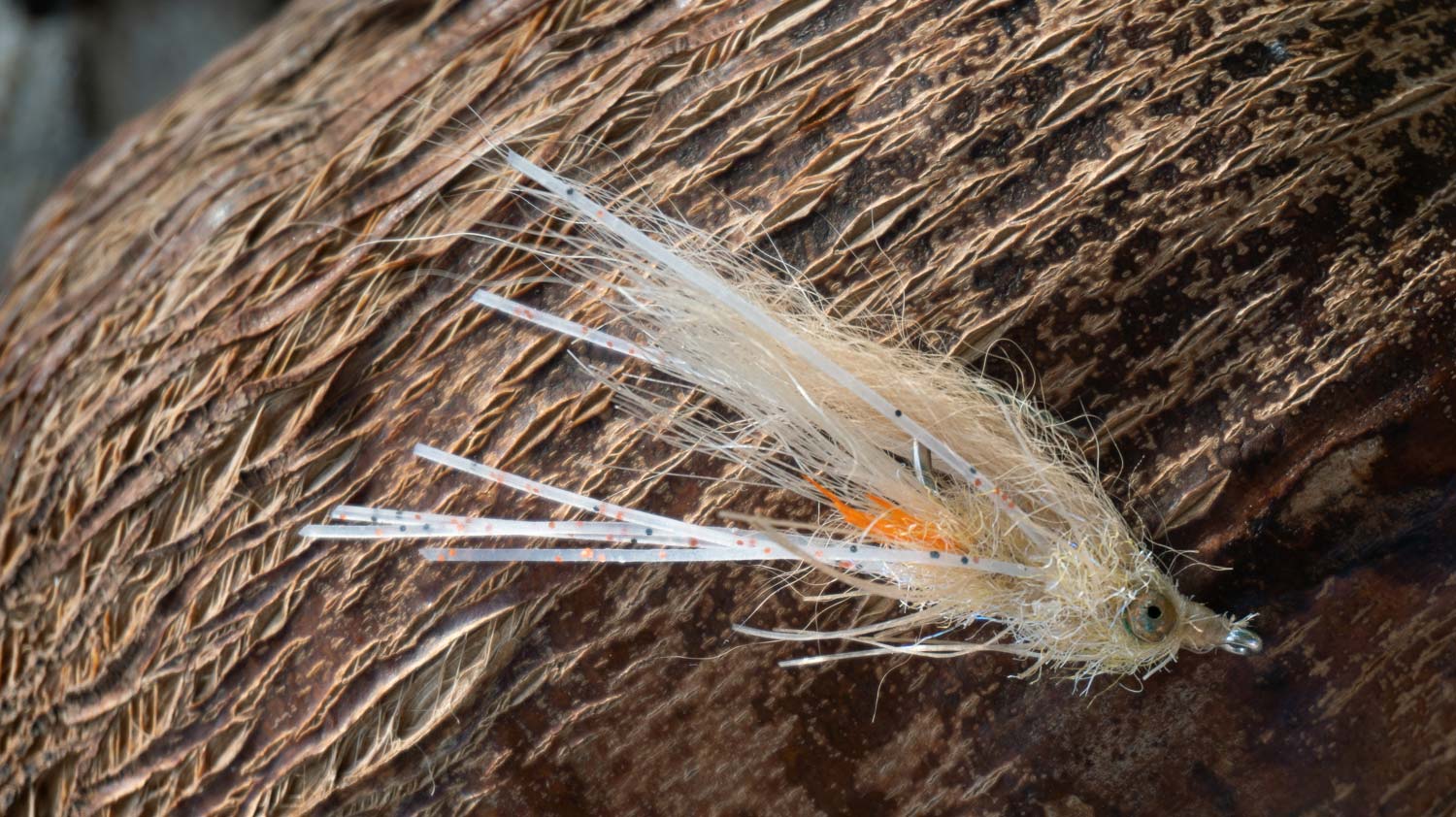
By John Byron
MY FISHING FRIEND RON WINN SAYS THIS: “I LOVE TO TIE FLIES. I LOVE TO FLY FISH. IF I HAD TO PICK ONE… I’D PROBABLY TIE FLIES.”
I’m kinda there too.
So when I started chasing bonefish a few years ago, I sopped up patterns like a sponge and tied a gazillion flies. Lots from Lefty’s book on saltwater flies. Many/most of Dick Brown’s bonefish patterns. ‘Five essential flies for the Bahamas.’ Drew Chicone. Aaron Adams. Tied them all. Took them on trips.
And came home each time realizing that about 98-percent of what I’d tied stayed in the fly box. So, as a matter of self-discipline (weak) and determination (getting stronger), I’ve started to cut back on what I tie and what I carry.
I’M DOWN TO SEVEN PATTERNS:
Read More »Fingers Crossed
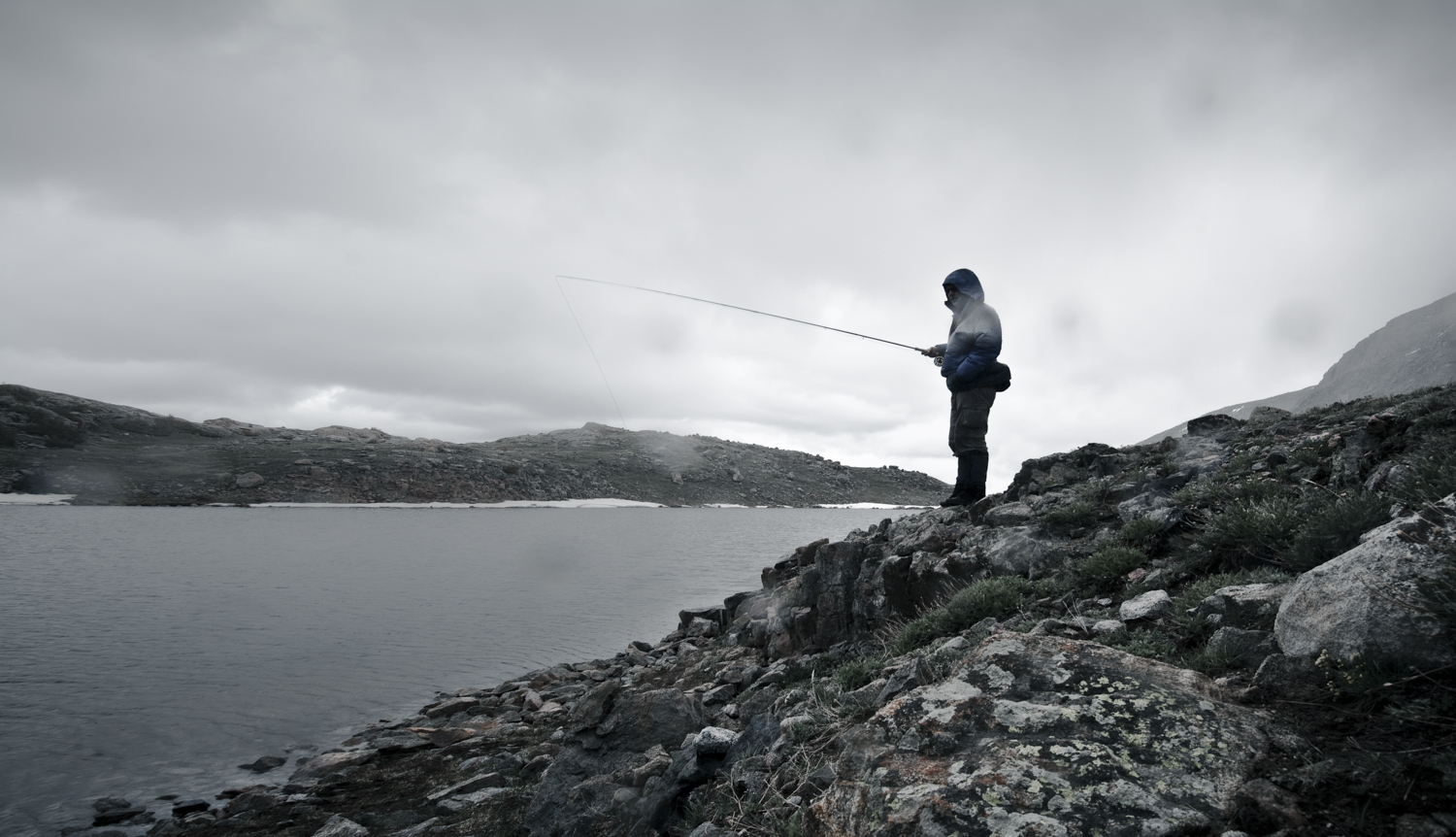
By Steven Brutger
FOR MONTHS WE HAD OUR FINGERS CROSSED.
Eying snow reports and talking to the few who had been in the mountains, we were cautiously optimistic. Despite a big snow year we had a shot at hitting it right.
A few days too early and ice would cover the high alpine lakes we hoped to fish. Or worse snow levels might make travel too arduous to reach them in the first place. Just right and we might be lucky enough to fish as the ice moved out, being the first to show our flies to hungry golden trout.
Now, miles into the Wilderness, we would soon have our answer.
Huddled under a tarp, a few hundred feet below tree line, we put our backs toward horizontally falling rain and snow. Spindrift was visibly blowing over the ridge tops. Conditions were deteriorating. After a restless night in our bags the only option was to continue up and test our luck.
The lake was half covered in ice. Peering through graupel a hundred feet above the water we spotted a
Read More »Dos and Don’ts For Guided Fishing
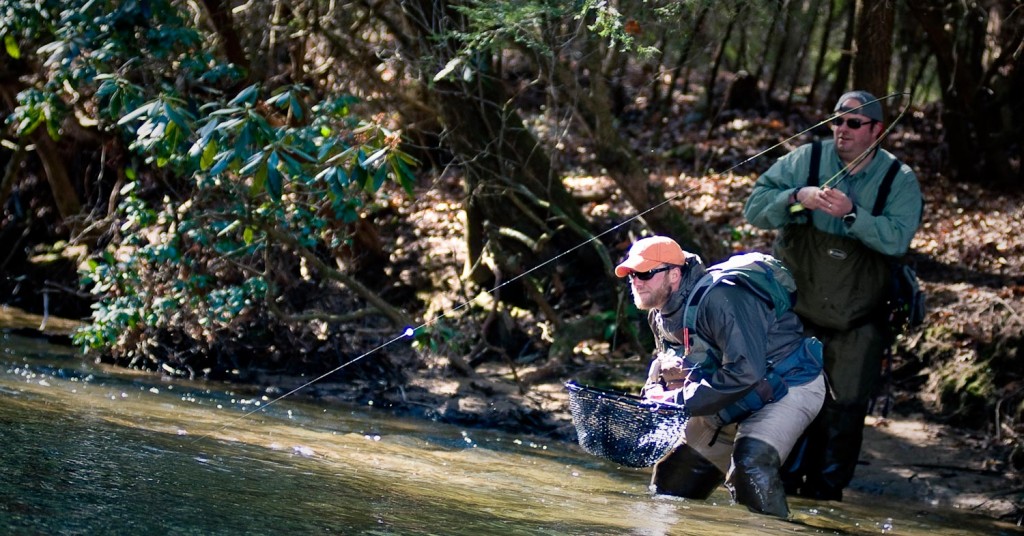
“I have done enough guiding with enough people of all types that I sometimes cheer for the fish.”
My friend Kirk Deeter, writing on the Trout Unlimited blog April 25th, threw out the bold headline: “Guides: Gatekeepers or Profiteers”. There’s no mystery where Kirk stands on the subject. He goes on to write, “I think the sun rises and sets on the fly fishing world where guides collectively say it does. They are stewards of their rivers. They are the innovators, and the teachers. And a good guide is, for fly fishing and trout conservation, worth his or her weight in gold.”
I agree with Kirk completely but it’s apparently a controversial topic. Not everyone loves fishing guides and it got me wondering why. Most of my friends are, or have been, fishing guides. I am not, but I hear the stories and I remember having a few rough days with guides back in the day. I mentioned it to Kirk and this was his response.
“You ask a great question here. Let me put it to you this way. I have done enough guiding with enough people of all types that I sometimes cheer for the fish. Seriously. You can say I said that. On the other hand, nothing lights me up more than sharing a passion with someone who gets it, appreciates it, and really shows some genuine class and enthusiasm. A great guide and client team should be like a Bwana and his tracker… two people on one mission… bound by respect.”
I reached out to a few more friends in the guiding business and asked them, from their perspective, where things go wrong. I decided to make a list. I figured, like Rodney King said, “why can’t we all just get along?”
People hire guides for a host of different reasons but they all want the same thing, a great day on the water. Unfortunately, some days end with neither the guide or the client feeling all that good about it. Malfunctions in the client-guide relationship can spoil what should be a positive experience for everyone. Fortunately these malfunctions can be easily avoided. With that in mind, here is a list of dos and don’ts for your day of guided fishing. Follow these simple guidelines and, even if the fishing is slow, you’ll walk away feeling like you got your money’s worth.
A quick note: I use a great deal of male pronouns. In no way do I mean any disrespect the the many talented and hard working female guides out there. I’m just trying to keep this under 2000 words.
DOS
•Do be enthusiastic
Bring a positive attitude. Have fun, relax. No one fishes well when they’re tense.
•Do be clear about your expectations
Tell your guide right up front what you want out of your day. If you just want to chill and take photos, say so. Want to be a better caster at the end of the day, no problem. Want to catch
Read More »The V Grip
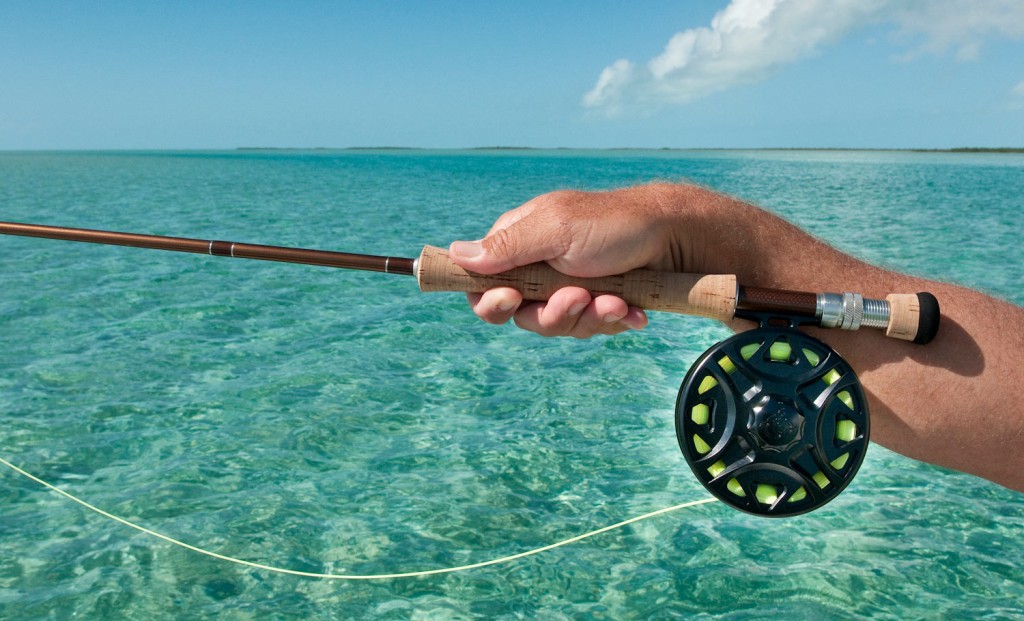
HOPEFULLY YOU’VE GOTTEN COMFORTABLE WITH ADDING THE WRIST SNAP TO YOUR CAST. TODAY BRUCE IS GOING TO GET INTO SOME SERIOUS ADVANCED TECHNIQUE.
Your going to see him use the “V Grip”. This is going to feel seriously odd at first. In fact I think this is harder to get the hang of if you have been casting for a long time. Don’t get discouraged, the results are amazing. Don’t expect to get it over night but with a lot of practice you can do this smoothly and effectively and you’ll be glad you spent all that time out casting on the lawn. Bruce will be back on Friday with the final video in the series.
Check out the video!
Read More »deGala’s Grass Shrimp

By Herman deGala
Let’s size up a shrimp pattern for saltwater.
A compadre of mine asked if I could fashion a grass shrimp that was 3 to 4 times larger than my mysis shrimp so that he could chase redfish in his native Texas on the Gulf. It had to be tied on a saltwater hook and it had to be really durable.
I used the basic concept from my mysis shrimp, combined it with some of the principles from my carp flies and came up with this.
The 3/32” tubing can be found on the web and the rest of the materials can be found at your local fly shop or online.
WATCH THE VIDEO AND LEARN TO TIE DEGALA’S GRASS SHRIMP
Read More »Burning Chrome
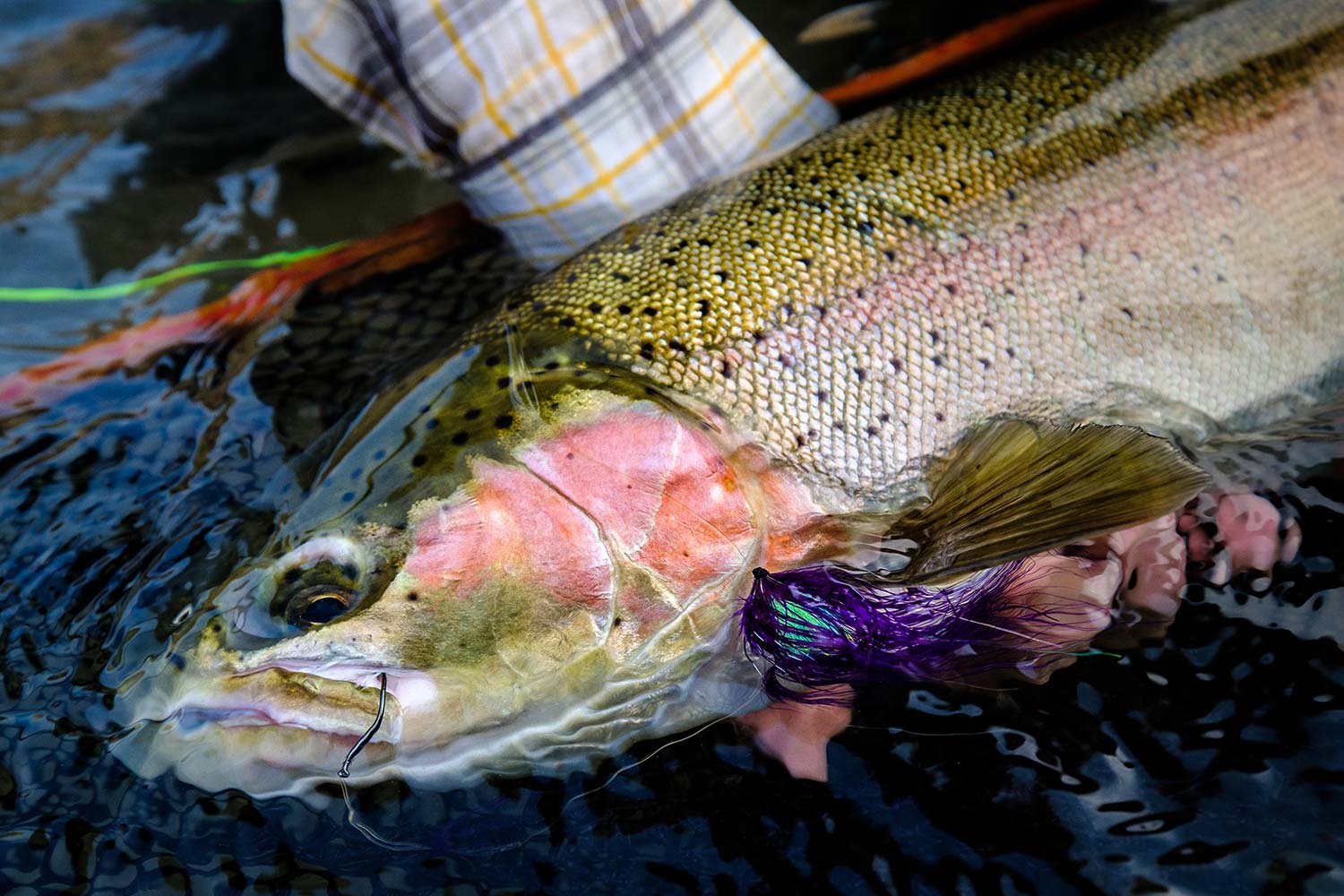
By Louis Cahill
The sun never rises.
Not today, at least not here on the Deschutes River. The light is an eerie yellow-orange. The air is hot and dry, and the wind is howling. It’s unsettling. You’d expect it to feel like fog or overcast but it doesn’t. It’s almost the opposite. When you catch a glimpse of the sun, it’s just a vague red blotch in the sky. The air burns the soft tissues of my eyes, nose, throat and lungs. Everything smells and tastes like a camp fire. I cough constantly and spit up chunks that look like cottage cheese into the river. The Deschutes River Canyon fades as I swing my fly from behind a hot, gray vail. It feels like the whole world is on fire.
A few miles away the Columbia River gorge is consumed in flame. One of the prettiest places I know, reduced to ash and coal. The fire is so intense that it jumps the mile wide Columbia River and sets Washington ablaze. Stupid kids shooting fireworks. They caught them, but what are you going to do with a bunch of kids who burnt down the lives and livelihoods of tens of thousands of Oregonians. Fire fighters do an amazing job of saving what can be saved while the rest of us just watch it burn.
I left my home in Atlanta less than a day before Hurricane Irma was scheduled to hit. The day before it had devastated the Florida Keys. It’s still hard to picture. I had been in the Keys the week before, when Harvey was washing Houston from the map. While the East drowns, the West burns and I don’t know which is worse. I have learned this much during my stay in Oregon. When they call for evacuation from a storm, Texans may say, “We’ll see what happens,” or “I’m not leaving my home,” but when they call for evacuation from fire, everybody goes. No one “rides it out.”
Everyone in the camp admitted to having gotten up in the middle of the night to look for an orange glow on the horizon. As terrible as the fire in the gorge is, it isn’t the forest being lost that most of us are concerned about. We have all been watching the count of returning steelhead to the Columbia system and the news is no better than that of the fire.
2016 was one of the worst steelhead returns in decades. As we stand in the Deschutes, 2017 returns are only about a quarter of last year, which biologists called a complete year-class collapse. Burned trees will grow back in time but, with ocean conditions worsening, steelhead populations may be harder to replace. It’s anyone’s guess if we are seeing a few bad years or a worsening trend.
Notably absent are the B-run fish. The big steelhead headed for Idaho, who stop in the Deschutes for a breather in the cold water. This year only eleven-hundred are expected to enter the system. Far fewer will find their way here. If you were to draw a bubble-graph with one bubble representing B-run steelhead in the Deschutes and another representing Georgia steelheaders, the intersection would not inspire confidence.
With the gorge burning and the steelhead runs so poorly reported, most anglers have elected to stay home, or maybe fish somewhere else. The river is as lonesome a place as I’ve ever seen it. Normally a traffic jam, the Deschutes is pleasantly deserted. The water is the clearest I’ve ever seen it and flowing strong. If breathing the air wasn’t as painful as pepper spray I’d be swinging flies in paradise.
I am lost in thoughts of fire and fish when I feel the familiar pluck, pluck, pull of a hot summer steelhead.
Read More »When Is a Pizza Not a Pizza?

Q: WHEN IS A SLICE OF PIZZA NOT A SLICE OF PIZZA?
A: WHEN IT’S A RISING TROUT!
I got this surreal photo via text from my buddy Rob Parkins (Photographer, Fly Tyer, Fishing Guide in Victor ID). It may be my favorite fly fishing photo ever. If you don’t see the trout yet, keep looking. Once you see it, it’ll blow your mind.
Like the Virgin Marry appearing in a piece of burnt toast the pizza trout was an oman of good things to come. Three weeks later Rob joined Kent and I on the South Fork for an unexpected salmon fly hatch. It was awesome!
Check out Rob’s site rpoutside.com to see more of his photos and find out about fishing opportunities.
Read More »